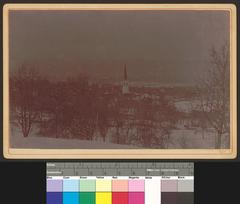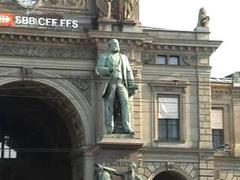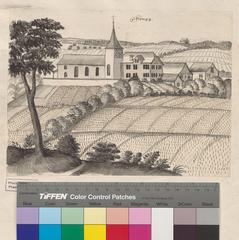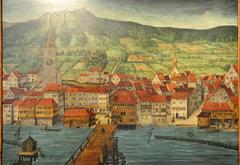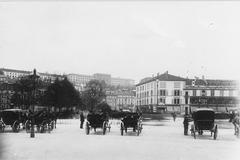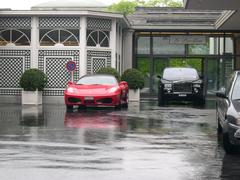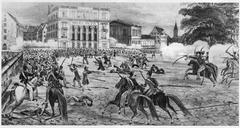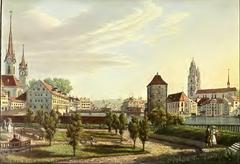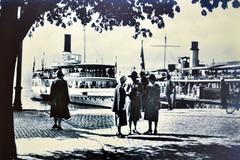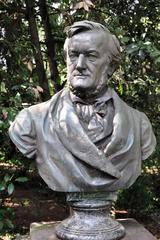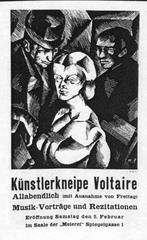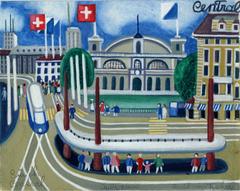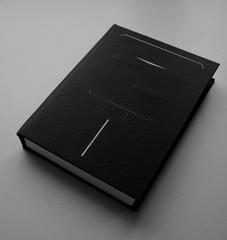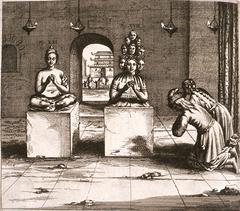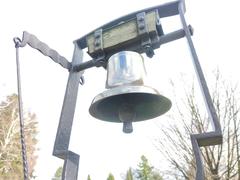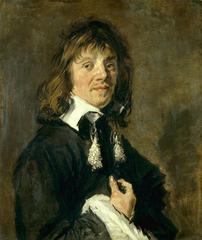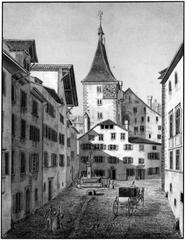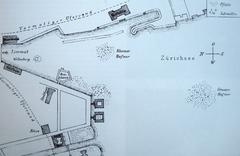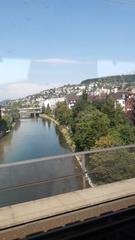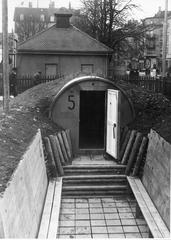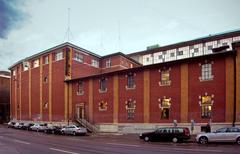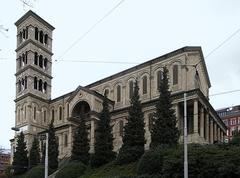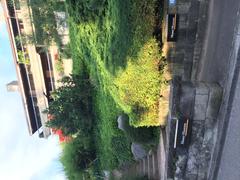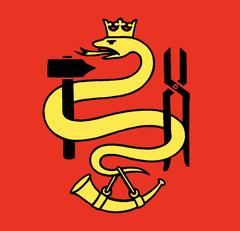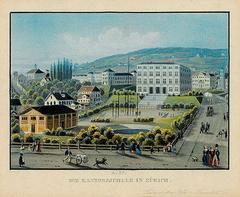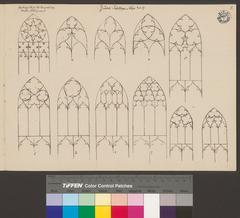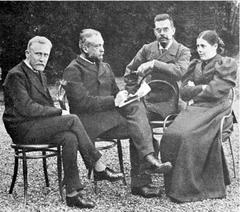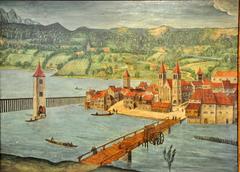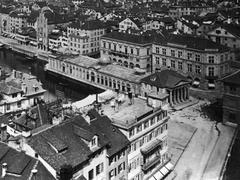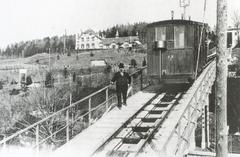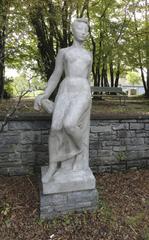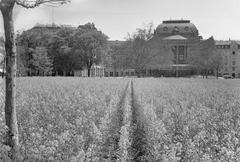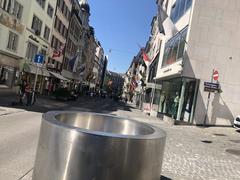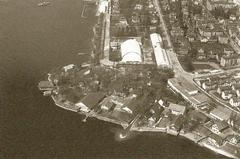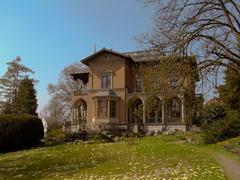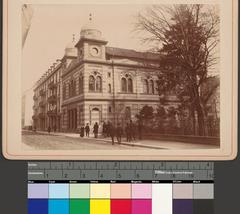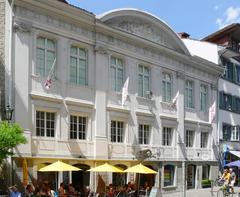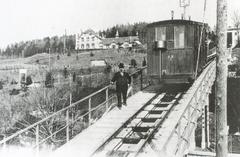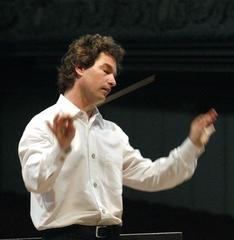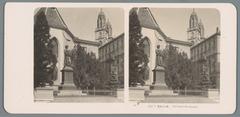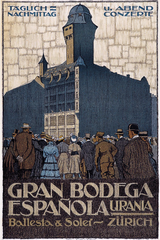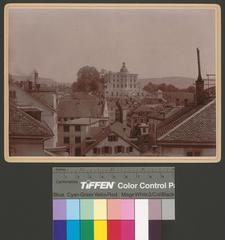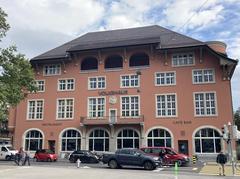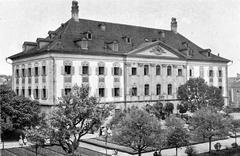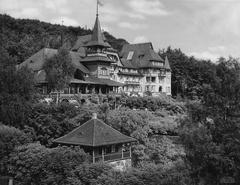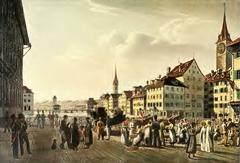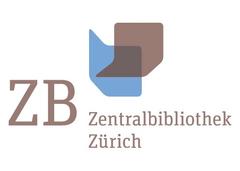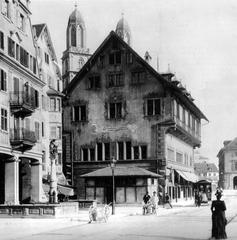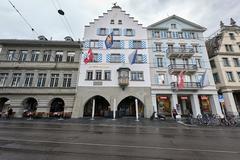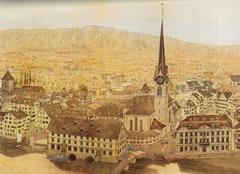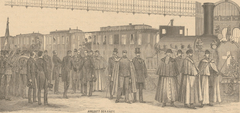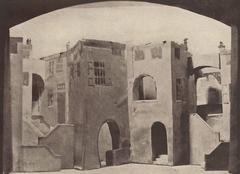Fraumünster Abbey Zurich: Complete Visiting Guide, History, Highlights, and Travel Tips
Date: 14/06/2025
Introduction: Fraumünster Abbey’s Significance
Located in the heart of Zürich’s Old Town, Fraumünster Abbey is a landmark of spiritual and cultural significance. Founded in 853 AD by King Louis the German as a Benedictine convent for noblewomen, Fraumünster quickly rose to prominence, with its abbesses wielding immense religious, economic, and political power. The abbey’s architectural evolution—blending Romanesque, Gothic, and later Baroque features—reflects Zürich’s complex history, while its world-famous stained glass windows by Marc Chagall and Augusto Giacometti continue to draw visitors from around the globe.
Today, Fraumünster serves as both an active Protestant church and a focal point for art, music, and cultural events. This comprehensive guide covers everything you need to plan your visit: history, architectural highlights, visitor information, tickets, tours, accessibility, and nearby attractions. For official updates, refer to the Fraumünster official website, Audiala, or MySwitzerland.
Contents
- Founding and Early History
- Medieval Power and Influence
- Architectural Evolution
- The Reformation and its Impact
- Artistic Legacy: Stained Glass Masterpieces
- Visiting Fraumünster Abbey: Hours, Tickets, and Tips
- Accessibility and Visitor Etiquette
- Guided Tours and Audio Guides
- Nearby Attractions and Practical Information
- Frequently Asked Questions (FAQ)
- Summary and Call to Action
- References
Fraumünster Abbey: History and Evolution
Founding and Early Years (9th–11th Centuries)
Fraumünster (“Women’s Minster”) was established in 853 AD as a Benedictine convent by King Louis the German. His daughter, Hildegard, became the first abbess. The abbey was granted significant privileges—tax immunity, the right to mint coins, and jurisdiction over markets—making Fraumünster a dominant force in medieval Zürich (audiala.com). The Romanesque crypt, among the city’s oldest structures, survives as a tangible link to this era.
Medieval Power and Influence (12th–15th Centuries)
During the Middle Ages, Fraumünster’s abbesses—often from noble families—held sway over Zürich’s governance and economy. The abbey’s lands and coin-minting rights reinforced its secular power, and the church expanded architecturally, adding monastic buildings and artistic embellishments (audiala.com). The abbess’s authority was so significant that she often mediated political disputes within the city.
Architectural Evolution: Romanesque Roots to Gothic Grandeur
Fraumünster’s architecture reflects centuries of stylistic change. The original Romanesque features—rounded arches, thick walls—are preserved in the crypt and parts of the southern transept (History Tools). In the 13th and 14th centuries, Gothic elements such as pointed arches and ribbed vaults were added, culminating in the iconic nave’s verticality and light-filled space (Fascinating Zurich). The slender green-copper spire, completed in 1732, is now a city landmark (Nordic Visitor).
The Reformation and Secularization (16th Century)
The 16th-century Swiss Reformation led by Huldrych Zwingli brought monumental changes (audiala.com). The abbey was dissolved in 1524, its lands absorbed by the city, and the church was repurposed as a Protestant place of worship. Katharina von Zimmern, the last abbess, ensured a peaceful transition, marking the end of Fraumünster’s direct political influence but ensuring its continued spiritual role.
Artistic Legacy: Stained Glass and Modern Additions
Marc Chagall’s Stained Glass Windows
Fraumünster’s five monumental stained glass windows by Marc Chagall (installed in 1970) are its most celebrated feature. Each window, up to 10 meters high, uses vibrant colors to depict biblical stories:
- Prophets (Blue): Elijah’s ascent
- Jacob (Red): Jacob’s dream
- Christ (Green): Scenes from Christ’s life
- Zion (Yellow): City of God
- Law (Orange): Moses receiving the Ten Commandments
Chagall’s dreamlike style infuses the choir with light and spiritual symbolism (Fascinating Zurich; Nordic Visitor).
Augusto Giacometti’s Southern Transept Window
In 1945, Augusto Giacometti added the “Heavenly Paradise” window to the southern transept, filling the space with radiant color and spiritual imagery (Fascinating Zurich).
Paul Bodmer’s Frescoes
Paul Bodmer’s frescoes (1921–1941) in the cloister vividly depict the abbey’s founding and the lives of Zürich’s patron saints, enhancing the church’s historical narrative (Fascinating Zurich).
The Grand Organ and Crypt Museum
Fraumünster houses Zürich’s largest organ, with 5,793 pipes, used for both services and concerts. Beneath the church, the crypt museum features archaeological remains and multimedia exhibits tracing Zürich’s religious and civic history (History Hit; Fraumünster Official).
Visiting Fraumünster Abbey: Practical Information
Location and Getting There
- Address: Münsterhof 2, 8001 Zürich, Switzerland
- Public Transport:
- Tram: Lines 4 and 15 (“Helmhaus”), or lines 2, 7, 8, 9, 10, 11, and 13 (“Paradeplatz”) (Fraumünster Official)
- Train: Zürich Hauptbahnhof is a 15-minute walk
- On Foot: Easily accessible in the Old Town
Visiting Hours
- March–October: 10:00 am – 6:00 pm
- November–February: 10:00 am – 5:00 pm
- Last entry: 15 minutes before closing
- Closed: Mondays and during services or special events. On Sundays, tourist access starts at 12:00 (Fraumünster Official)
Tickets and Admission
- Contemplative visits: Free entry
- Tourist admission: CHF 5 for adults (includes access to art, crypt, and audio guide)
- Free for: Children under 16; those not visiting the crypt or using audio guide
- Tickets: Purchase onsite or online (Fascinating Zurich)
Guided Tours and Audio Guides
- Public Tours: Regularly scheduled in German and English
- Private Group Tours: Available by reservation
- Audio Guides: Multilingual, included with ticket (Fraumünster Official)
Accessibility
- Wheelchairs: Main areas accessible; crypt may have limited access
- Facilities: Restrooms nearby; staff can assist with special needs (myswitzerland.com)
Visitor Etiquette
- Dress code: Modest attire recommended
- Photography: Generally prohibited inside to protect artworks and maintain atmosphere (confirm policy on arrival)
- Silence: Maintain a quiet, respectful environment, especially during services
Shop and Souvenirs
- Location: In the transept; offers items inspired by Chagall’s windows and Fraumünster motifs (Fraumünster Official)
Highlights Not to Miss
- Chagall Windows: Best viewed in morning light
- Giacometti Window: Southern transept
- Paul Bodmer Frescoes: In the cloister
- Crypt Museum: Archaeological finds and historic displays
- Grand Organ: Attend an organ recital if possible
- Architectural Details: Romanesque crypt, Gothic nave, and Baroque spire
Nearby Attractions
- Grossmünster Church: Zürich’s other major medieval church, famed for its towers and Reformation history (Nordic Visitor)
- St. Peter’s Church: Home to Europe’s largest church clock face
- Bahnhofstrasse: Zürich’s premier shopping avenue
- Swiss National Museum: For those interested in deeper Swiss history
Frequently Asked Questions (FAQ)
What are Fraumünster’s visiting hours?
Open Tuesday to Sunday, 10:00 am – 6:00 pm (March–October), 10:00 am – 5:00 pm (November–February). Closed Mondays and during services.
How much do tickets cost?
CHF 5 for adults, including audio guide; free for children under 16 and contemplative visits.
Is Fraumünster wheelchair accessible?
Yes, though some historic areas like the crypt have limited access.
Are guided tours available?
Yes, in German and English, plus private tours and audio guides.
Can I take photos inside Fraumünster?
Photography is generally not permitted inside to protect the art and preserve the atmosphere.
What other Zürich historical sites are nearby?
Grossmünster, St. Peter’s Church, and the Swiss National Museum are all within walking distance.
Summary and Travel Tips
Fraumünster Abbey is a cornerstone of Zürich’s spiritual and cultural life, offering over a millennium of history, stunning architecture, and world-class art. Its stained glass windows by Chagall and Giacometti are internationally renowned, while the abbey’s ongoing religious and cultural events keep it vibrant today. For the best experience:
- Visit on weekday mornings for fewer crowds and optimal light
- Take a guided tour or audio guide for deeper insights
- Combine your visit with nearby historical sites
Stay up to date via the official Fraumünster website and download the Audiala app for personalized travel tips.
References
- audiala.com
- myswitzerland.com
- fraumuenster.ch
- Fascinating Zurich
- Sandra Wagner Wright
- Nordic Visitor
- Tripoto
- History Hit
- Sacred Destinations
- History Tools
